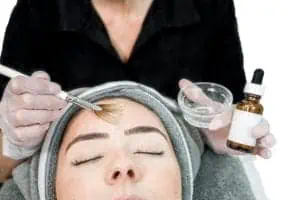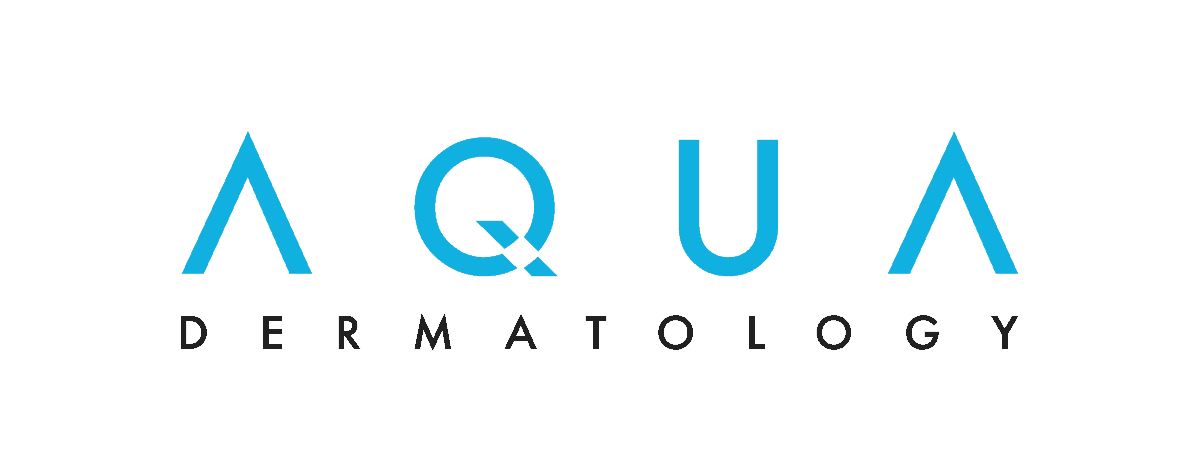 If you’re tired of seeing fine lines, acne scars, sun spots, or dark patches every time you look in the mirror, you may be considering getting a chemical peel. In this procedure, a mixture of acids is applied to the skin to slough off the top layers and reveal the smoother, more even-toned skin beneath. But just how safe — or dangerous — is a chemical peel?
If you’re tired of seeing fine lines, acne scars, sun spots, or dark patches every time you look in the mirror, you may be considering getting a chemical peel. In this procedure, a mixture of acids is applied to the skin to slough off the top layers and reveal the smoother, more even-toned skin beneath. But just how safe — or dangerous — is a chemical peel?
“When patients ask me about peels, they’re often nervous and have a lot of questions,” said Shawna Sopher, a licensed medical aesthetician at Water’s Edge Dermatology. Some of them are remembering a 2002 episode of the TV show “Sex in the City” in which a character named Samantha undergoes a peel and ends up with raw, red skin that hurts whenever she moves her face. “Patients still bring up that storyline all these years later,” Sopher said.
Samantha’s experience wasn’t very realistic then, and it’s even less realistic now that peels have become gentler. Here, Sopher and Jenna Steffel, APRN at Water’s Edge Dermatology, answer the questions they hear most about chemical peels.
What conditions can be treated with a chemical peel?
Chemical peels are often ideal for treating scars, fine lines, uneven skin tone, and sun damage, which typically call for a mild- to moderate-strength peel. These peels can be performed by a licensed aesthetician.
Chemical peels are also beneficial for acne, noted Sopher. “I have many acne patients who get a peel every six months because it does a better job of drying up oil and clearing blackheads than a lot of other treatments on the market,” she said.
Deep peels, which penetrate the epidermis (the top layer of skin) and into the dermis, can address wrinkles, severe sun damage and precancerous cells. These peels can also stimulate new collagen production, making skin look younger and smoother. Due to the depth of the peel, deep peels are performed only by a dermatologist or other medical provider, and are a once-in-a-lifetime treatment.
“The patient condition and skin type dictate the depth of peel needed to achieve the desired outcome,” Steffel said.
Are chemical peels safe for sensitive skin?
Most people with sensitive skin can tolerate today’s milder peels. “In the past, there was just one very strong acid practitioners could use,” Sopher said. “But now, there are gentler acids that can be mixed together and tailored to a patient’s skin type.”
It’s best to get a chemical peel from an experienced, board-certified dermatologist or a licensed aesthetician working at a dermatology practice rather than finding the best deal on Groupon, Sopher added. The provider you choose should have the skills and knowledge to evaluate your skin and select a chemical mixture that’s both safe for your skin and best suited to the problem you want to treat.
Are chemical peels safe for dark skin?
Superficial to medium-depth peels are sometimes used successfully in people with dark skin to treat problems such as acne, melasma and post-inflammatory hyperpigmentation (dark spots). While peels can lighten dark spots, in some cases they can also cause them. That’s why it’s important to consult with a skin care provider who has significant experience treating skin of color before having a peel.
Deep peels are not recommended for people with darker skin. They can lead to hyperpigmentation or hypopigmentation (areas of lighter skin).
Who should avoid getting a chemical peel?
Peels are not recommended for anyone who is pregnant or nursing, has inflamed acne or a sunburn or is taking Accutane. People who use retinoids can get a chemical peel but must stop using the product three to four days before treatment.
What happens during the procedure?
For a mild to moderate peel, the provider will cleanse your skin with a degreasing treatment, then apply the chemical one layer at a time, checking the skin after each application (called a pass) for any unwanted reaction. Most people require about four passes, Sopher said, though people with thicker, oilier skin may need up to six passes. The process usually takes less than 30 minutes.
A deep peel uses a stronger chemical, usually phenol, and takes about 90 minutes. You may be given a local anesthetic and a sedative to make the procedure more comfortable. To prep your skin for the peel, you’ll need to follow a pre-treatment plan for up to eight weeks prior to your appointment. The provider will also give you post-treatment instructions to follow.
Do chemical peels hurt?
Mild to moderate peels can be somewhat uncomfortable. “Your face will feel hot, but you’ll be given a handheld fan to rest on your chest during the procedure to minimize the sensation,” Sopher said. Your skin may also feel prickly and tight after each pass.
Following the treatment, you’ll be given a calming cream you can use to manage any lingering warmth and tingling. Within six to 10 hours after the procedure, your skin will cool down. Any redness will fade over time.
After a deep peel, your face may feel hot and uncomfortable for some time. Your eyelids may swell shut. Your doctor may recommend taking a pain reliever and using ice packs as needed.
How long does it take to see results?
After a mild or moderate peel, you should see a difference in two weeks or less. Your skin will start peeling approximately three or four days after the treatment.
“The amount of peeling can vary from a little flakiness to sheets of skin coming off your face,” Sopher explained. “People sometimes don’t peel much and worry that the treatment was ineffective, but there’s no relationship between the amount of peeling and how well the treatment works.”
After a deep peel, you’ll see new skin begin to appear after two weeks. You may experience significant peeling, along with redness, swelling and crusting as the skin heals. Any swelling should go down in a couple of weeks. Redness may linger for up to three months.
How often is too often?
Your skin care provider will recommend how many peels you need in order to achieve the outcome you want. More is not always better. Typically, mild peels can be performed as frequently as every one to two weeks, and moderate peels, every four to six weeks.
Article Written By: Jessica Brown is a health and science writer/editor based in Brooklyn, New York. She has written for Prevention, Johnson & Johnson, the Breast Cancer Research Foundation and many other outlets.





